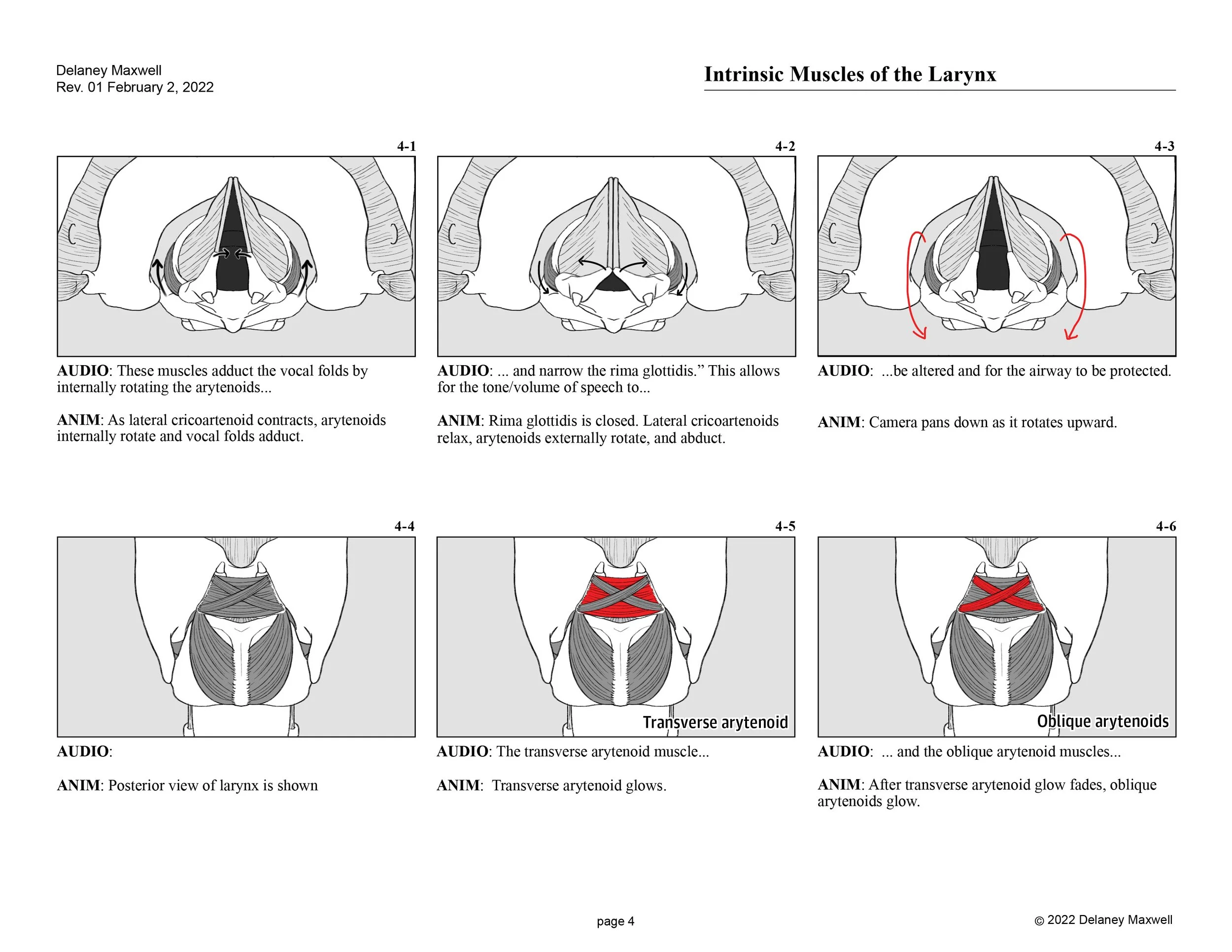
MASTERS RESEARCH
EXPLORING THE EFFECT OF RENDERING STYLE ON ANATOMICAL
LEARNING VIA ANIMATIONS OF THE INTRINSIC LARYNGEAL MUSCLES
RESEARCH QUESTION
How does a low polygon vs. high polygon rendering style of animation affect a graduate students’ understanding of the origin, insertion, and function of the intrinsic laryngeal muscles?
THE PROBLEM
Learning anatomy is an essential part of any life sciences field, such as nursing, physical therapy, medicine, sports science, and occupational therapy, (Campbell, 2021). However, there are many difficulties in teaching and learning anatomical subjects. Anatomy professors must teach an extensive amount of complex information in a very limited amount of time. Students must then learn, understand, remember, and apply this multitude of complex information. For example, students must be able to memorize the innervations of the muscles in addition to their origins, insertions, and actions, which requires an understanding of how different muscles and other bodily structures relate to each other.
Anatomy courses are typically divided into two parts: lecture and dissection. Many students struggle to absorb the wealth of information presented in lectures without the use of proper visual aids and multimedia tools, as evidence has shown that people learn more from “words and pictures than from words alone” (Mayer, 2009, p. 223) or from “pictures and spoken words than from pictures and printed words” (Mayer, 2009, p. 200); and with obstacles such as the COVID-19 pandemic, students might not have the same access to hands-on learning experiences like dissections. Even with the ability to participate in dissections, some areas can still be difficult to visualize and access on a cadaver and, as a result, are not included in dissections. Some professors have access to models, but these models often lack moveable parts. For an area such as the larynx, where the arytenoid cartilages have several positions, it makes learning from these models especially difficult. This problem is also applicable for 2D illustrations. In such situations, some professors must resort to using their hands for demonstration.
DETAILS
Advisor:
Leah Lebowicz, CMI, EdD
Committee Members:
Sam Bond
Eric Swirsky, JD
Content Expert:
Christa Wellman
Department of Anatomy & Cell Biology, College of Medicine, University of Illinois Chicago
Audience: College level and higher Anatomy & Physiology students
Deliverables: Two 3D animations
Software: Autodesk 3D Studio Max, Pixologic Zbrush, Adobe After Effects, Adobe Audition
Narrator: Sydney Agger
STORYBOARD
FINAL DELIVERABLES
“I love that it was brief, but really thorough at the same time. This is really helpful putting words to animations is a superior way to retain information and actually understand it.”
— Anonymous Participant












